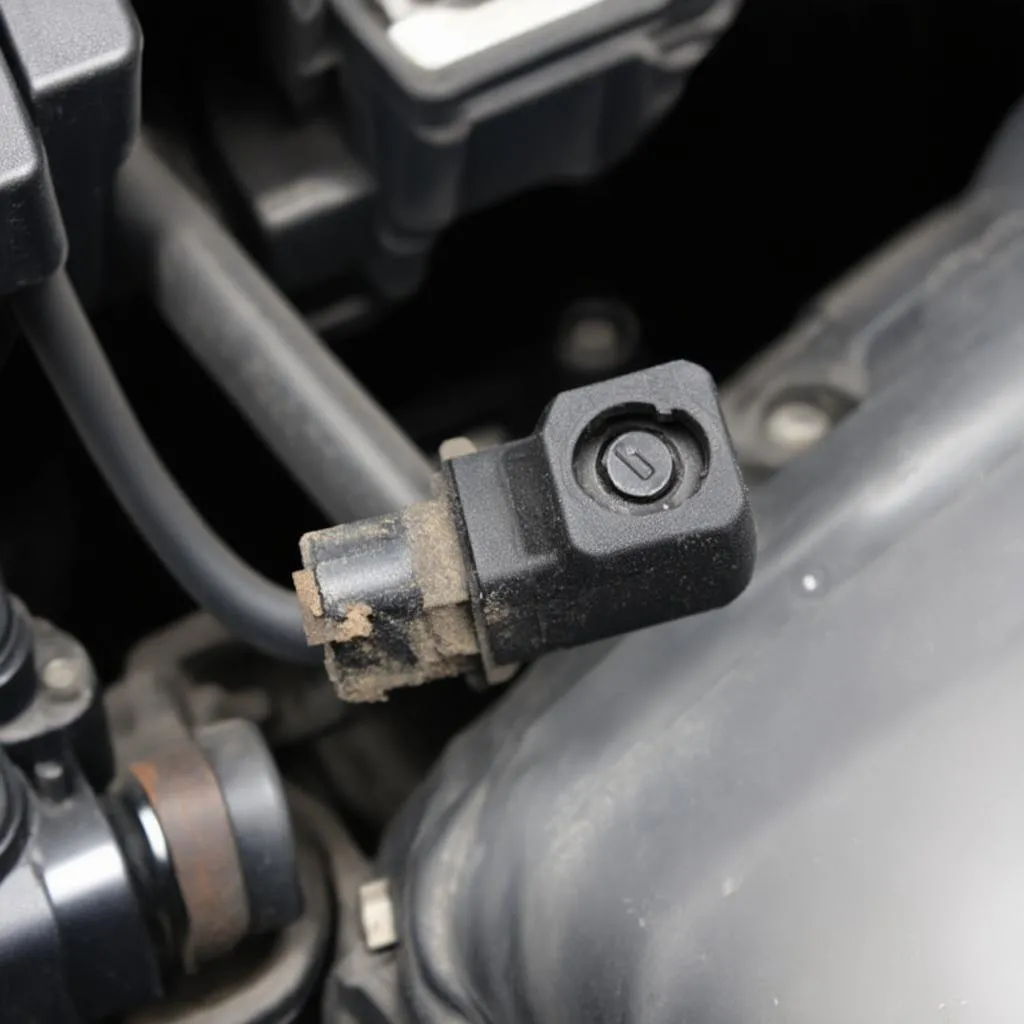Have you ever felt a shiver down your spine when your “check engine” light suddenly illuminates? It’s like your car is trying to tell you something is wrong, but it’s speaking in a cryptic language only mechanics understand. One such enigma is the dreaded P0011 OBD-II code, a common yet perplexing issue for 2006 Nissan Quest 3.5L V6 owners.
Imagine this: You’re cruising down the highway, enjoying the smooth ride and your favorite tunes, when suddenly, that dreaded light pops up. You pull over, a knot of worry forming in your stomach. What does it mean? Is it a minor hiccup or a sign of a major engine malfunction?
This article acts as your personal code-breaker, diving deep into the P0011 code, its potential causes, and how to get your Nissan Quest back on track.
Understanding the Cryptic Message: What is OBD-II Code P0011?
In the intricate world of automotive mechanics, the P0011 code stands for “Camshaft Position Sensor – Timing Over-Advanced (Bank 1 Sensor A).” In simpler terms, your car’s computer, the Engine Control Module (ECM), has detected that the timing of the intake camshaft is off. This camshaft is responsible for controlling the intake valves, which let air into the engine cylinders for combustion. If the timing is off, it can lead to a whole host of performance issues.
Behind the Scenes: Possible Causes of P0011 in Your Nissan Quest
Several culprits could be triggering the P0011 code in your 2006 Nissan Quest 3.5L V6. Let’s examine some of the usual suspects:
- Faulty Camshaft Position Sensor: This sensor acts like the eyes of your engine, telling the ECM the exact position of the camshaft. If it malfunctions, the ECM receives inaccurate information, leading to timing issues.
- Worn Timing Chain: The timing chain is a vital component that ensures the crankshaft and camshafts rotate in perfect synchronization. Over time, it can stretch, causing the timing to slip.
- Dirty Engine Oil: Engine oil that’s past its prime and contaminated with sludge can clog the oil passages that control the variable valve timing system. This blockage can restrict oil flow, leading to timing problems.
- Faulty Variable Valve Timing (VVT) Solenoid: This solenoid controls the flow of oil to the VVT actuator, which adjusts the camshaft timing. If it malfunctions, it can disrupt the timing.
The Domino Effect: Symptoms of a P0011 Code
A misbehaving camshaft can throw a wrench into your engine’s performance. Keep an eye out for these common symptoms:
- Illuminated Check Engine Light: This is often the first and most obvious sign.
- Rough Engine Idle: Your engine might sound like it’s struggling to run smoothly, especially when idling.
- Reduced Engine Performance: You might experience a decrease in power and acceleration.
- Poor Fuel Economy: A mistimed engine can guzzle more fuel than usual.
Restoring Harmony: How to Tackle the P0011 Code
Before you dive headfirst into repairs, it’s essential to diagnose the root cause of the P0011 code properly. Consider these steps:
- Read the Code: Connect an OBD-II scanner to your car’s diagnostic port (usually located under the dashboard) to retrieve the code and any other stored codes.
- Inspect the Wiring and Connectors: Start with the basics. Ensure all wiring and connectors related to the camshaft position sensor and VVT system are secure and free from damage.
- Check the Engine Oil: If your oil looks like a chocolate milkshake, it’s time for an oil change. Fresh, clean oil can sometimes resolve the issue.
- Inspect the Timing Chain: This requires a bit more mechanical expertise, so you might want to consult a qualified mechanic. A stretched or worn timing chain will need replacement.
- Test the Camshaft Position Sensor and VVT Solenoid: Use a multimeter to test these components for proper operation. Replace any faulty parts.
 Faulty Camshaft Sensor
Faulty Camshaft Sensor
Zen and the Art of Car Maintenance: The Importance of Preventative Care
In the realm of car ownership, a touch of Zen philosophy can go a long way. Just as maintaining a balanced lifestyle contributes to well-being, practicing preventative car care can prevent many common issues, including the dreaded P0011 code.
Regular oil changes, using high-quality oil, and addressing minor issues before they escalate can significantly reduce the risk of encountering this and other engine-related problems. Remember, a well-maintained car is a happy car!
 Importance of Preventative Car Maintenance
Importance of Preventative Car Maintenance
Frequently Asked Questions: Unraveling the P0011 Code Mysteries
Q: Can I still drive my car with a P0011 code?
A: While it’s possible to drive short distances, it’s not recommended. Driving with a P0011 code can potentially lead to further engine damage.
Q: How much does it cost to fix a P0011 code?
A: The cost depends on the underlying cause. A simple sensor replacement might be relatively inexpensive, while a timing chain replacement can be more costly.
Q: Can a bad battery cause a P0011 code?
A: While a weak battery can cause various electrical gremlins, it’s unlikely to directly cause a P0011 code.
Need a Helping Hand? We’re Here to Assist!
Navigating the world of OBD-II codes can be daunting, but remember, you’re not alone! At techcarusa.com, we’re dedicated to providing car owners with the information and support they need to keep their vehicles running smoothly.
For expert assistance with diagnostic tools or any other car repair needs, contact us on WhatsApp at +84767531508. Our team of automotive specialists is available 24/7 to provide guidance and support.
We hope this article has shed light on the mysterious P0011 code and empowered you to take control of your Nissan Quest’s well-being.
Drive safe and keep those engines purring!